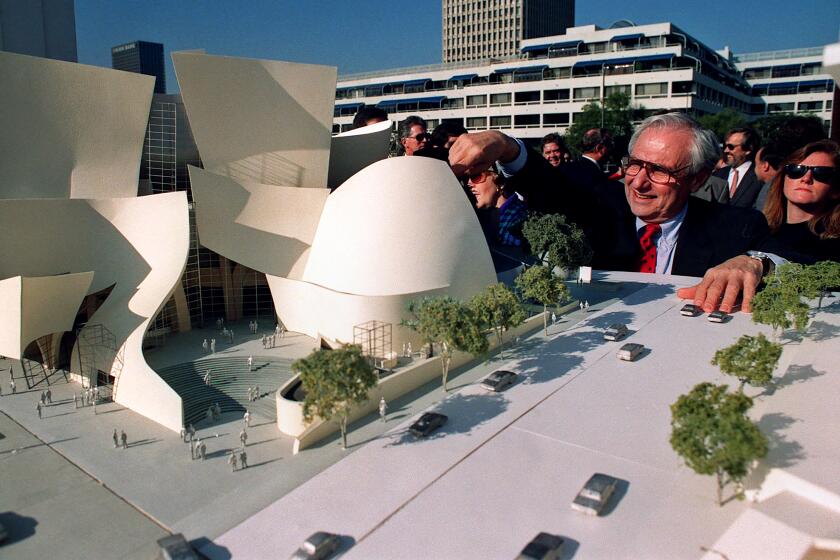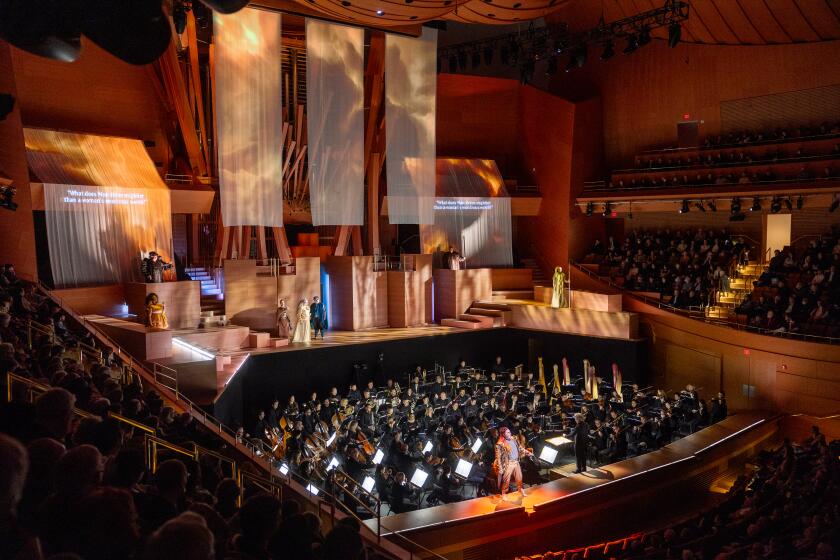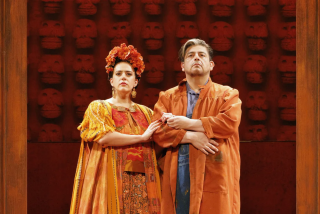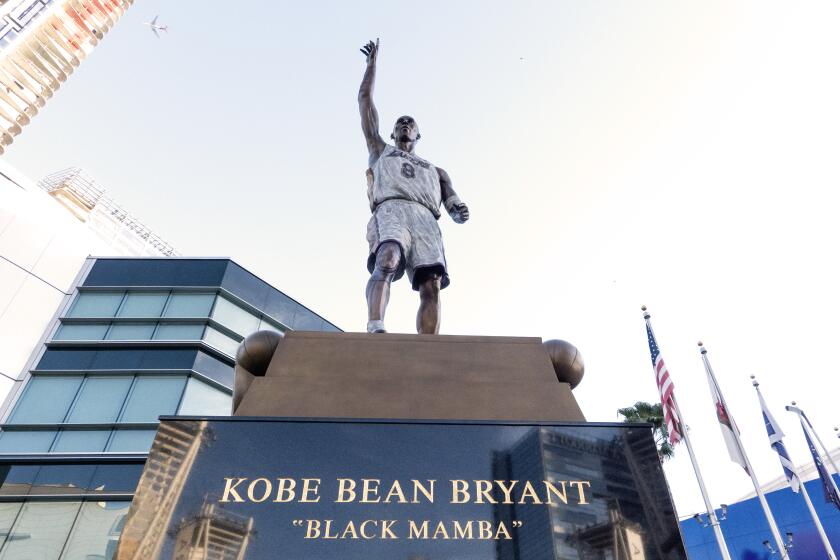Review: One fled Nazis; one was an overlooked Black talent. Together at L.A. Opera, composers shine anew

When James Conlon arrived as Los Angeles Opera’s music director in 2006, he immediately discovered that the city might prove the ideal backdrop for what has been one of his key missions, what he called “recovering” the voices of composers silenced by the Second World War and then mostly forgotten. L.A., after all, had been a refuge for artists fleeing the Nazis, just as the city had been earlier for those persecuted in Russia and Eastern Europe.
We’ve now heard a number of obscure operas and concert works by the likes of Alexander Zemlinsky, Erwin Schulhoff, Walter Braunfels and Viktor Ullmann. The names may not be familiar, their music unknown, but they are kin.
Zemlinsky, for instance, was the mentor and brother-in-law of Arnold Schoenberg, whose music and whose teaching at USC and UCLA had a huge influence on 20th century composition, reaching as far as film music, jazz and the avant-garde. Other emigres were of the same generation and background, like Erich Wolfgang Korngold, who created the orchestra soundtrack at the dawn of talkies.
Los Angeles Opera brought back, after 15 years, one of Conlon’s early successes from his “Recovered Voices” initiative on Saturday night, Zemlinsky’s “The Dwarf.” That it has taken so long reminded us that we are still recovering these voices. But it also reminded us that recovering these works has in recent years also taken on a new urgency.
“The Dwarf” is a one-act opera that lasts just under 90 minutes. In 2008, L.A. Opera prefaced it with a negligible short comic opera by Ullmann. This year the opening opera is William Grant Still’s “Highway 1, USA,” recovering a Black L.A. voice of considerable note.
On the surface, these two exceedingly different, seemingly incompatible operas have little in common. Still, who made a name for himself in the Harlem Renaissance in the 1920s, moved to L.A. in 1934. Here he found more opportunity, breaking racial barriers in classical music and in Hollywood. At the time of his death in 1978, he was known as the dean of Black composers.
After 20 years, Walt Disney Concert Hall has changed Los Angeles and its philharmonic orchestra, but we now have to live up to Frank Gehry’s full, original vision.
There may not be any sense of the blues in the Austrian Zemlinsky, who fled the Nazis, arriving in New York in 1938. But both composers were musically conservative, holding onto classical tradition at a time when music in their worlds was progressing at great rate, and both operas revolve around an impervious teenager whose callousness reveals significant social ills.
“Highway 1,” which has a libretto by Still’s wife, Verna Arvey, was begun in the early 1940s but didn’t reach its final version until 1961. It centers on a couple — Bob, who runs a gas station, and Mary. Against Mary’s better sense, they sacrifice to put Bob’s younger brother, Nate, through college. Nate, however, cares little for their sacrifice, attempts to seduce Mary and stabs her when she rejects him. Mary survives, and only then does Bob learn how much more Mary matters to him.
Still’s elegantly understated, subtly magical score keeps its distance from the drama, flowing naturally and quietly as a river, or time itself. There is little shock, even in the stabbing. Yet that is exactly makes the opera exceptional. It is verismo without the melodrama, a knowing soundtrack for how goodness is found in the quotidian.
Kaneza Schaal’s folksy new production plays it straight, with one twist. The opera begins with Mary recounting a little fable about a fox and a rabbit. Here two dancers costumed as the critters cleverly act the tale, and they continue to devilishly pop up throughout, adding needed fanciful color and spunk.
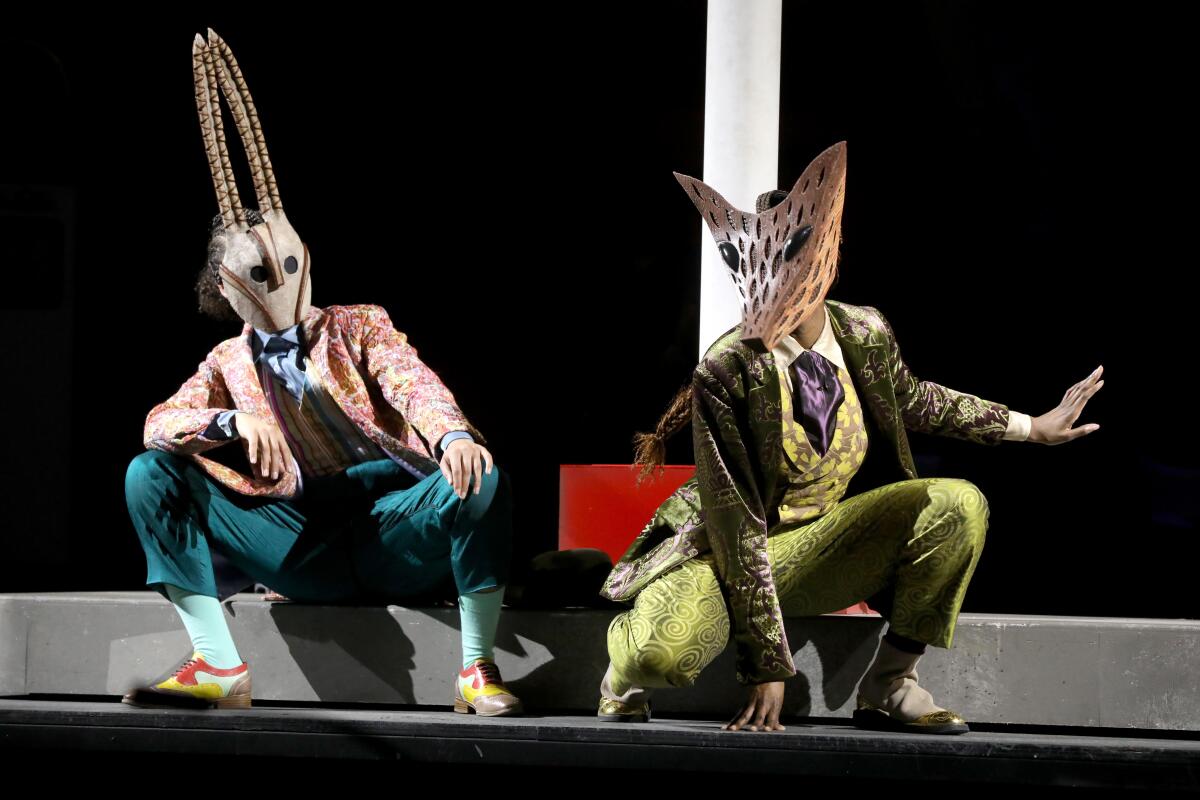
In all the ways that “Highway 1” is understated, “The Dwarf,” which was written in the early 1920s, is overstated. The opera is twice as long as “Highway 1.” The score was made to ravish, Zemlinsky being a master of breathtakingly lush orchestration. The singers are asked for grandeur and extreme emotion. Melodrama is the name of the exaggeration game.
The libretto is taken from Oscar Wilde’s story “The Birth of the Infanta.” Inspired by Velazquez’s painting “Las Meninas” (The Ladies in Waiting), “The Dwarf” conveys the horrors faced by outsiders. In this case, an infanta in the Spanish court receives a sultan’s gift on her 18th birthday of a dwarf who has never seen himself in a mirror and is unaware of his perceived ugliness and difference.
For her, the Dwarf is a plaything with whom she can feign falling in love with, like a pet. For him, her supposed love is a gift from heaven. When he finally sees a reflection of himself, the cruel truth of her ruse leaves him nothing to live for.
All is conveyed in the grandest of operatic manner, and Darko Tresnjak’s original production amplifies that with a set that is a grandiose replication of Velazquez’s painting. In an L.A. Opera podcast, Conlon calls this one of his favorite productions in his nearly 20 years with the company.
There could be other possibilities. Instead of going from modest to over the top, the reverse also would be revealing, the overcoming of excess. There is, too, the possibility for relevance rather than re-creation of the past.

Los Angeles hasn’t been much of a ‘Ring’ town, but the L.A. Phil production directed by Alberto Arvelo found a way to feel novel. Here’s how.
Yet one more commonality between these operas — feminism — is worth mentioning. Bob and the Dwarf lack essential — and in the Dwarf’s case, tragic — awareness of the world around them, but each opera has a woman who is quite aware. Nicole Heaston is the powerfully no-nonsense Mary in the first opera, and Emily Magee is deeply moving as Ghita, the maid who is the only one who understands the Dwarf.
Rodrick Dixon, a commanding Dwarf in the original production, is all the more stunning in the role this time around. “Highway 1” boasts Norman Garrett’s warmly affable Bob and Chaz’men Williams-Ali’s stoic Nate.
As for Conlon, he found Still’s groove and exulted in everything flowery about Zemlinsky. He is a conductor who so believes in “The Dwarf” that he defies you not to love it — even if you are, like me, melodramatic-adverse. Anyone who can bring that much conviction and, yes, rapture to the score requires you to think twice, which is exactly why we recover voices.
‘Highway 1, USA’ and ‘The Dwarf’
Where: Dorothy Chandler Pavilion, 135 Grand Ave., Los Angeles
When: Through March 17; check website for times
Tickets: $16-$259
Running time: About 3 hours
Info: (213) 972-8001, laopera.org
More to Read
The biggest entertainment stories
Get our big stories about Hollywood, film, television, music, arts, culture and more right in your inbox as soon as they publish.
You may occasionally receive promotional content from the Los Angeles Times.
